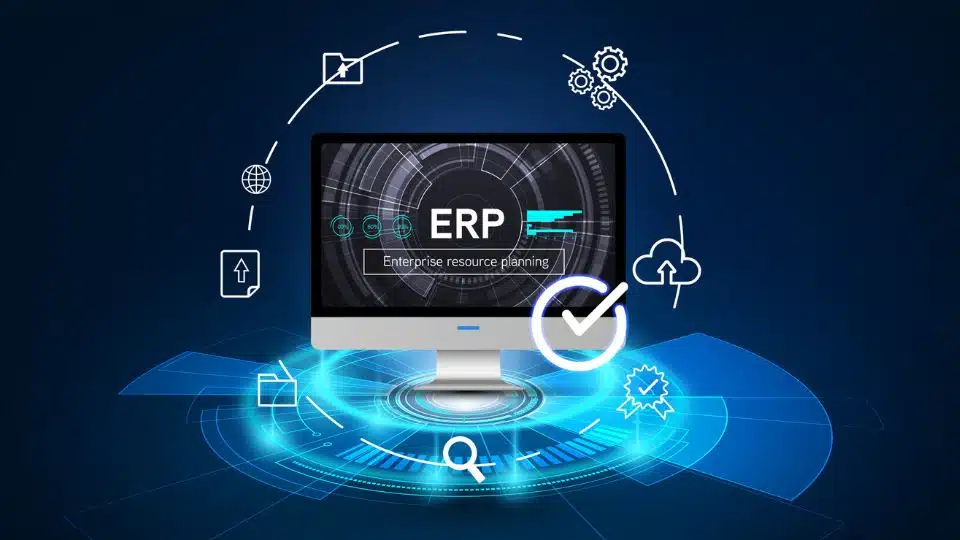KRIS MERZ, Partner, Columbus Consulting

Enterprise Resource Planning (ERP) systems have come a long way since their origins in the 1960s. The first Material Requirements Planning (MRP) system, developed by IBM for a manufacturing client, set the stage for broader adoption. Over the following decades, these systems evolved—first into Material Resource Planning (MRP II) in the 1980s, enabling more sophisticated production scheduling, and later into full-scale Enterprise Resource Planning (ERP) solutions in the 1990s. The term “ERP” itself was coined by Gartner, recognizing that these platforms could extend beyond manufacturing to support business operations across industries.
By the late 1990s and early 2000s, ERP systems began migrating to the cloud, lowering barriers for smaller businesses to implement enterprise-grade solutions. Over time, ERPs expanded their capabilities, integrating with front-office applications such as Customer Relationship Management (CRM), e-commerce, and marketing automation, as well as back-end functions like supply chain management (SCM) and human capital management (HCM).
Today, ERPs are critical for managing business operations resulting in the ERP market size expected to be near $50-$52 billion annually by 2025. However, many businesses are operating on ERP systems that are 15 years old or more. With rapidly evolving business needs, especially in industries like retail, companies are increasingly evaluating the benefits of upgrading to modern ERP solutions. While replacing an ERP is a complex and resource-intensive endeavor, it is often driven by critical business needs and the potential for significant operational improvements.
In this article, we’ll explore the key factors prompting ERP replacement and the benefits of adopting a modern system.
Key Drivers for ERP Replacement
- Aging and Outdated Technology: With many companies operating on ERP systems implemented many years or even decades ago the technology has become difficult and costly to support and the skills needed to support them are increasingly hard to find.
- Scalability & Flexibility: As businesses expand into global geographical locations, business and product lines their transactional volumes increase and their operational needs become more complex. These older ERP systems lack modern features and the scalability to efficiently support the businesses’ needs.
- Integration Challenges – Businesses today operate on a suite of different systems often requiring effective and reliable integration of data between them. Older ERPs often lack the ability to fulfill this need. With data being the center of operations this is a significant challenge to those with legacy ERPs.
- Lack of Software Vendor Support & High Maintenance Costs: Businesses will demand enhancements to older technology as their needs evolve requiring costly customizations but more of a concern is that software vendors will phase out support leaving companies vulnerable to security risks and operational disruptions.
- User Experience Challenges – Associates struggle with the complex and unintuitive user interface of legacy ERPs causing productivity impacts as well as turnover.
Benefits of a New ERP System
- Increased Efficiency – The greatest benefits of a modern ERP systems is the increased efficiency that is often achieved with its implementation. Between 92%-95% of companies who implemented a new ERP saw process and productivity improvements due to the capabilities not present in legacy systems such as workflow automation and artificial intelligence (AI) that reduce manual tasks.
- Real-Time Data Insights – With access to real-time advanced data insights, businesses can make informed decisions quickly while providing critical data needed for strategic planning.
- Enhanced Customer Relationships – By providing accurate data, automated notifications, and integrated customer service tools, customer have an improved experience with your business.
- Cloud Accessibility – Remote access capabilities support both flexibility and business continuity.
- Stronger Security & Compliance – Advanced security features protect data and ensure regulatory adherence.
Advice for a Successful ERP Implementation
ERP implementations are inherently complex, costly, and resource intensive. Without sufficient funding and the right expertise, they have a failure rate exceeding 65%. To increase the chances of success, companies must allocate their top talent—not just those who happen to have availability. This requires careful planning before the project begins, ensuring critical roles are either backfilled or their workloads are redistributed.
One of the most common mistakes in ERP implementations is failing to recognize this as a transformation opportunity. When organizations attempt to replicate their existing processes within a new ERP, they risk turning their modern system into a more expensive version of their old one. Effective change management is essential to maximize the benefits of the new platform.
In most cases, ERP failures are usually not due to software limitations but rather how the system is implemented. A well-planned approach, supported by the right people and a commitment to transformation, with appropriate funding is key to a successful ERP deployment.
Conclusion
Replacing an ERP system is a major decision, but for many companies, it’s a necessary step to remain competitive and efficient as their business evolves. Whether driven by technological limitations, scalability and flexibility concerns, or the need for better integration, modern ERP solutions provide significant advantages. By investing in a new ERP system, organizations can unlock greater efficiency, enhanced decision-making, and a stronger foundation for future growth.
